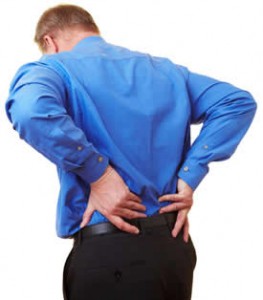About the Lumbar Spine
Lumbar vertebrae of the spinal column have five vertebrae i.e. L1-L5 and they together make up the lower back part of the spine. The upper most vertebrae L1 of the lumbar spine connects to the thoracic vertebrae T12 that is positioned below the shoulder blades. The sacral spine meets L5 that is the base of the lumbar spine. The movement and swing of the hips as well as the pelvis when the body is in motion like running or walking depends on the joint between the L5 and L1.
A lumbar part of the spinal column through L1 to L5 bears the maximum weight of the body and therefore they are the largest movable vertebrae.
Causes of Lumbar Spine Pain
Lumbar pain is caused by a variety of reasons and the presence of the various structures in the lumbar spine. For example, irritation or compression of the nerve roots exiting the spine, problems in the joints, pressure on discs as well as bones and muscles are the major source of lower back pain.
 Lumbar spine pain is often a result of interconnected lower spine problems like disc degeneration that leads to compression of the nerve roots is often caused by joint instability. Apart from the above stated causes lower back pain can be caused by muscle problems that are a result of an injury or trauma to the lower back, degenerated discs, lumbar disc herniation, sacroiliac joint dysfunction, spondylolisthesis, osteoarthritis, lumbar stenosis and sciatica.
Lumbar spine pain is often a result of interconnected lower spine problems like disc degeneration that leads to compression of the nerve roots is often caused by joint instability. Apart from the above stated causes lower back pain can be caused by muscle problems that are a result of an injury or trauma to the lower back, degenerated discs, lumbar disc herniation, sacroiliac joint dysfunction, spondylolisthesis, osteoarthritis, lumbar stenosis and sciatica.
Lumbar Pain Surgery
Usually lumbar pain is treated through non-surgical treatment methods and doctors go for alternative treatment methods in most of the cases. However, in certain cases where these alternate treatment methods are unable to provide any relief to the patient, surgery is often the considered treatment method. Discectomy, percutaneous discectomy, laminotomy as well as laminectomy are the surgery procedures that are often done in cases of lumbar spine disorders causing pain.

